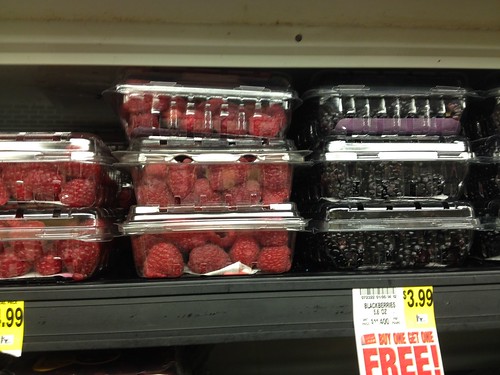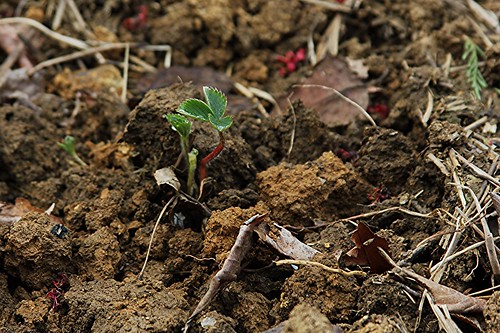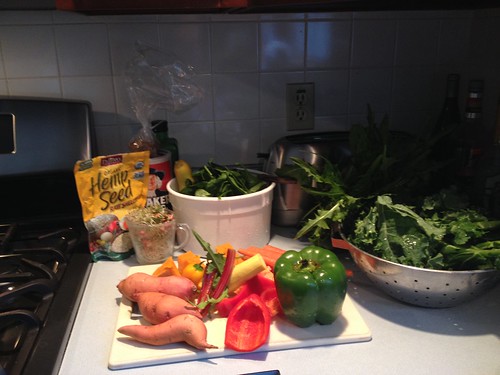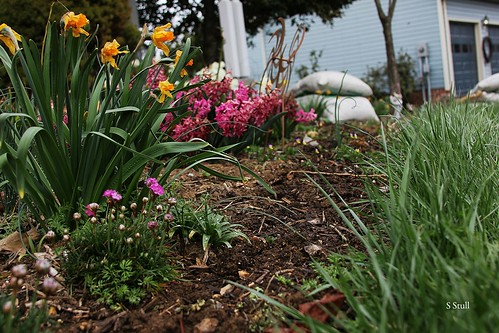Gardening for parrots is not the nightmare you might imagine, and that’s coming from someone who doesn’t have a green thumb! Now that spring is here, it is the perfect time to start planting for you and your flock — or to begin planning for the summer. Start small. Anyone with a garden or little patch of grass can grow their own produce, and doing so is a great way to save money. Feeding your flock is, after all, one of the single most important components of parrot care, responsible for their longevity, health, enrichment, and behaviour. It also isn’t cheap. Please remember, though, that any food needs to be thoroughly washed… even if it is home-grown and organic.
You don’t need a lot of land or skill to start a successful veggie patch. The real battle is knowing what to plant, when, and where.
The following list contains ten nutritious full OR partial sun parrot-safe fruits and vegetables for spring and summer planting:
(Water each of these plants daily for the first two weeks after transplanting, because they don’t have a big root system yet.)
1. Bell peppers:
- Plant them: after the weather warms, as they originate from South and Central America.
- Water: daily to keep soil evenly moist. Too much water can cause rot.
- Light requirement: full sun.
- Harvest when: the peppers are full. Green is unripe (but still edible, healthy, and tasty).
- Store: freeze, or store in the fridge for up to a week.
- Additional tip: buy a potted pepper plant from a greenhouse, rather than starting from seeds.
2. Carrots, beets, radishes, or turnips:
- Plant them: during the spring.
- Water: once they start to droop.
- Light: min. 4-5 hours of sun. These can go in a shadier spot, but will take longer to harvest.
- Harvest: when they measure about ¾ of an inch across the top under the stem. Wiggle them up out of the soil and remove tops.
- Store: Refrigerate for up to two weeks.
- Additional tip: the tops of these plants are highly nutritious and edible, and well worth saving.
3. Kale:
- Plant them: before the last frost date in your area for maximum tenderness and flavour. You want it to get frost bitten!
- Water: when it starts to droop.
- Light: full or partial sun.
- Harvest: when the leaves are about the size of your hand.
- Store: you can freeze it, dehydrate it, or keep it in the fridge for fresh eating.
- Additional tip: leafy greens like kale, lettuce, and spinach can get away with more shade than some plants, but still need some sun.
4. Strawberries
- Plant them: in the spring.
- Water: every other day after established. The watering amount affects their flavour! (More water decreases it.)
- Light: full sun.
- Harvest: when the fruits come in, full and red.
- Store: refrigerate.
- Additional tip: buy these plants pre-potted from your local greenhouse.
5. Cucumber, Butternut/Winter Squash, Yellow Squash, Zucchini, Pumpkin:
- Plant: in summer.
- Water: as soon as they droop slightly.
- Light: Full sun.
- Harvest: cucumbers and zucchinis before they turn yellow; pumpkin and squashes after their vines dry out and rinds toughen. If you want seeds, fruits should be larger, and if you don’t, they should be smaller.
- Store: pumpkin can also be frozen, and the seeds can be saved, baked, and served as a treat for both people and parrots. Other squashes can sit out at room temp short term.
- Additional tip: if you plant more than one kind of squash seed, you may well end up with weird hybrids next season. We had ‘pumkini’ one year.

Doing some research on prices at the store… Berries are one of the more expensive items! These usually grow on bushes, so can take up more space in your garden.
6. Spinach:
- Plant them: in the spring OR autumn.
- Water: daily.
- Light: full sun or partial shade.
- Harvest: with scissors. Leave the roots and cut off the leaves, and you’ll have a continuous harvest.
- Store: refrigerate. If you leave it out short-term, put it in a bowl of cold water.
- Additional tips: spinach likes cold weather. It gets bitter and bolts (goes to seed) if the weather gets too warm, as with most leafy greens.
7. Lettuce
- Plant: in the very early spring (after last frost date) or autumn.
- Water: daily.
- Light: full sun or partial shade.
- Harvest: like spinach.
- Store: refrigerate.
8. Sweet Potatoes
- Plant: in summer when soil is WARM.
- Water: daily.
- Light: full sun.
- Harvest: harvest in the early autumn before it gets too cold. You know they’re ready because the leaves begin to wither, revealing the sweet potato.
- Store: after harvesting, wash and lay them in the sun to dry out. Don’t eat them for a month, which allows flavour to ripen. Store in a cool, dry, dark place.
- Additional tip: planting in warm soil is essential, or they will rot.
9. Swiss Chard
- Plant: spring.
- Water: daily until its roots form, then leave it alone.
- Light: full sun.
- Harvest: like spinach (cutting off just the stem and leaves, leaving roots).
- Additional tip: this should pop up every year after. The stems make a good toy for your birds, and are perfectly edible for both you and the flock (if a bit tough).
10. Peas
- Plant: very early spring after the last frost date, or in the autumn.
- Water: daily.
- Light: full sun.
- Harvest: when the pods feel full, as if about to pop.
- Store: room temperature or refrigerate.
TIP: Watering your plants in the blazing sun will make them more susceptible to burning. Try watering your plant early in the day instead for optimal results.
If you choose to take your parrot out with you to soak up some sun, just make sure that he has access to shade, food, and water, and that you use a carrier or suitable cage/aviary. Because your attention will be on gardening, you can’t have your eye on your bird the way you need to while outside — it is especially risky to have a clipped or unrestrained parrot with you while working. These birds can go miles with just a little breeze, even clipped. While your parrot is out and about, just stay wary of cats, dogs, birds of prey, and other curious wildlife, as well as too-high or too-low temps.
Many plants and herbs can be grown in a box on your porch or window. I will be experimenting with this this spring, so will report back to you on that. Some easy ones include:
- Cilantro
- Mint
- Basil
- Leafy greens (red or oakleaf lettuce, etc.)
- Strawberries
(All are safe for parrots in moderation.)
Preparing the veggie patch:
When buying your plants, you should look for a short and stocky plant without blight marks, obvious infestations, or wilting. Start by digging the grass out of a patch of whatever size you desire. The placement should ensure that these plants will get plenty of direct sun. We have one main patch that is about 20×40’. (Yours can be much smaller, especially to start — maybe 4×4’.) Next, turn the earth with a shovel until all weeds/roots are broken up. Remove any rocks, then smooth with a rake.
When I have multiple seeds or plants, I dig a long trench, and place the seeds evenly along it, covering when finished. See plant packets for depth. Don’t pack the dirt. You can use a stick or plant label for a marker.
Cover the area with straw once you’ve planted everything and it’s just started to show above ground. This acts like a mulch, keeping weeds down and moisture in. As it decomposes over time, the straw also adds healthy organic matter to your patch.
TIP: ‘Edible Landscaping.’ For those of you who have limited space or restrictive HOA rules, here is a little ‘cheat’ so you can also grow veggies. Try hiding them in amongst conventional garden flowers like zinnias, marigolds, and roses for visual appeal. These plants will stay through summer, unlike daffodils, tulips, or pansies. Also helpful if you like the idea of gardening food, but don’t want to sacrifice aesthetic.
What if my area is too shady?
Even plants that are marked ‘shade’ or ‘low light’ require a few hours of sun every day. IF your patch is not in a sunny area, but you want to grow crops that have a low light requirement, you can try painting the area behind the crops white. Some greenhouses also carry reflective mulches for use in too-shady gardens.
TIP: Don’t plant the same things in the same place every year. Farmers rotate their fields to allow the soil to replenish, and you should consider this too, even if your quantities are smaller.
Make sure to check out the All Natural Feeding Program and Cookbook, so that you have plenty of ideas how to use these fabulous home-grown foods.
Have you tried gardening for parrots yet?
Sarah Stull is a graduate of the Royal Conservatoire of Scotland, a photographer, violist, and violinist who has plans of opening her own avian sanctuary on the east coast of America.






7 comments
After reading Yoly’s question, I comletely Identify (I’m 78) and feel so grateful to have my 2 grays in their new home. I’m pretty sure most anyone would enjoy my wonderful 39 y old YNA. But I wondered if one of my food solutions would be helpful. I go out in the garden every Sunday a.m. and pick a small amount of leaves …lettus, kale, parsley, boc cho, collards, turnips, then maybe a few herbs, like tumderic and chili… put that in the hand blender with and egg, beat the egg till it is very fluffy and a pretty green. Then I make it like an omlet. I’m not sure which of us likes it better!
I keep looking for information on sweet potato vines. The are edible for us, i was wondering if our parrot can eat it since they can also eat cooked sweet potato ???
I keep looking for information on sweet potato vines. The are edible for us, i was wondering if our parrot can eat it since they can also eat cooked sweet potato ???
I was told in Latin America that parsley will kill a parrot. My bird (Mexican Double Yellow Head,) was born July 1972. She has (survived) my misinformed diet of seeds, with little fruit and occasional vegetable, plus some cornmeal and peanut butter through all these years! I am grateful for your web site! How much food should a parrot consume in a day? Some days it seems like she barely eats, then she will “pick” pecans or dried banana slices out of her meal and not touch anything else. I bought your pellets long time ago. She will not touch them!!! I tried different ways… If I only give her pellets she acts like she’d rather starve! Rarely I have given her a small piece of scrambled egg, or chicken or other protein, but these do not amount to more than a quarter of a teaspoon, (I don’t want to make her sick!) Also, she can not be bothered with toys…. I have tried through the years… She learned to squawk for attention early in life. Drives us insane. Specially if I am on the phone…. I love her to bits, but her behavior is distancing my children from keeping her when I pass on. I am 79… This is a great concern! I surely could use some advice.
Hi Cindy, it’s www.birdtricks.com/hormones and you can also search “handling hormonal birds birdtricks” to find some blog articles as well.
Can you repost the article on handelling harmonies PLEASE. My mild mannered Quaker has become demonically possessed!
Daniele that’s just iceberg lettuce. Others have nutritional value :) I was also wondering what herbs they can eat?
Leave a comment